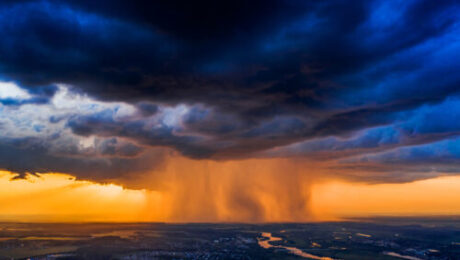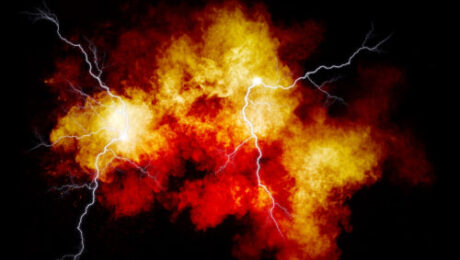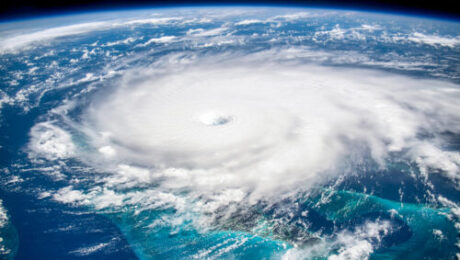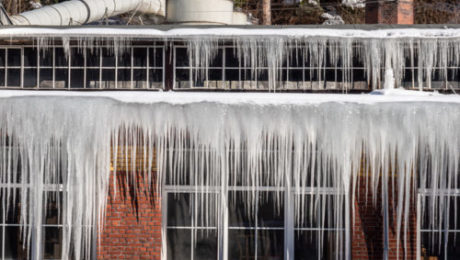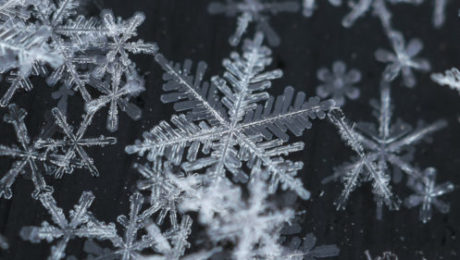The Impact of Secondary Perils on Property Insurance
This article is from RISQ Consulting’s Zywave client portal, a resource available to all RISQ Consulting clients. Please contact your Benefits Consultant or Account Executive for more information or for help setting up your own login.

Secondary perils, such as severe convective storms, floods, wildfires and hailstorms, have significantly impacted the commercial property market. In fact, according to industry data, secondary perils have consistently accounted for over 50% of insured natural disaster losses in recent years.
This article provides more information on secondary perils, including their impact on the property insurance market. It also offers tips on how businesses can mitigate associated risks.
What Are Secondary Perils?
Secondary perils are generally small to mid-sized loss events or secondary effects that follow a primary catastrophe such as an earthquake or a hurricane. According to credit rating agency AM Best, secondary perils account for a larger share of losses from catastrophes compared to primary perils, and it is now the norm that at least one secondary peril event creates losses greater than $10 billion each year.
This is a shift from historical patterns where primary perils represented the highest loss potential. Factors including climate change and population growth in coastal areas and other areas susceptible to catastrophes have led to this shift in the risk landscape.
Evolving Risk Modeling for Secondary Perils
The insurance industry has tried to address the challenges presented by secondary perils. For example, more sophisticated modeling tools are being developed to better understand and manage the risks. However, modeling capabilities are still limited compared to models for primary perils. Additionally, AM Best notes that it will be vital for secondary peril models to be continually recalibrated due to the quickly changing risk landscape.
Pricing Challenges and Capacity Constraints
Pricing challenges arise as secondary peril weather events become more common and severe. Since the technology used to model secondary perils is not as mature as those for primary perils, there is more uncertainty in underwriting them. This can lead to volatility in insurance pricing, making it harder for businesses to account for costs.
Capacity constraints also pose a significant challenge in the property insurance sector, particularly as it relates to secondary perils. These constraints can also lead to market volatility. They may result in insurers limiting coverage or pulling back from high-loss areas, leaving insureds to bear a larger portion of the risk.
Coverage Gaps
Coverage gaps for secondary perils are primarily due to underinsurance and limited availability of coverage. Additionally, property insurance policies may not cover losses caused by secondary perils like floods, leaving businesses to pay out of pocket for resulting expenses. Businesses should engage with insurance brokers and carriers to understand their coverage options and ensure they have adequate protection.
Risk Mitigation
Comprehensive risk assessment is challenging due to a lack of understanding and modeling capabilities. However, to mitigate the risks of secondary perils, businesses can adopt several risk management strategies. One such approach is business continuity planning, which involves identifying potential risks and creating procedures to minimize their impact. Additionally, investing in risk mitigation measures, such as infrastructure improvements or changes in operational practices, can reduce a business’s vulnerability to secondary perils.
Conclusion
While secondary perils present significant challenges, businesses can take proactive steps to understand these risks, ensure adequate insurance coverage and implement strategies to mitigate their impact. Contact us today for more information.
- Published in Blog
Mental Health Minute
This article is from RISQ Consulting’s Zywave client portal, a resource available to all RISQ Consulting clients. Please contact your Benefits Consultant or Account Executive for more information or for help setting up your own login.

Stress and anxiety is bound to creep into your life no matter the mitigation. When it does, you can prepare yourself with simple and quick techniques to sooth the impact and recover quicker.
How Can Grounding Techniques Help Manage Feelings?
Grounding is a practice that can help you manage experiences such as flashbacks, unwanted memories or negative emotions. These techniques involve focusing on the present to distract yourself from anxiety and other challenging emotions.
Physical Grounding Techniques
Physically grounding yourself involves using your senses to help you navigate feelings of distress. A technique to physically ground yourself is to put your hands in water and focus on the temperature of the liquid or switch from cold water to warm water and back while focusing on the present moment.
Other physical grounding exercises include deep breathing, savoring food or drink, picking up nearby objects and moving your body (e.g., walking, running in place or doing jumping jacks).
Mental Grounding Techniques
You can mentally ground yourself with exercises that prevent mental distractions and help redirect your thoughts to the present.
Such exercises include memory games, category-thinking (e.g., listing all the types of cake you can think of), reciting a song or book passage you know by heart, and visualizing a daily task you enjoy.
Soothing Grounding Techniques
Soothing techniques can be used to comfort yourself in times of high anxiety or distress. These techniques are intended to promote good feelings that reduce or distract from negative emotions.
You can practice soothing techniques by picturing the face of someone you love, repeating compassionate phrases about yourself, spending time with your pet, visualizing your favorite place or listing positive things.
Conclusion
Grounding techniques can help you manage unpleasant experiences like distress, anxiety, traumatic nightmares and flashbacks. Try these exercises to reduce distress when you first start to feel negative emotions.
Try These Mood-boosting Activities
Negative emotions and disappointments can easily derail your activities. Although it’s common to be in a bad mood occasionally, letting negative emotions take over your day can leave you feeling worse. Instead of ignoring a bad mood, try a mood-boosting activity.
Free Mood-boosters
- Walking outdoors is a great activity for improving your mood. Spending time outdoors and being in sunlight have both been proven to boost mood. Additionally, walking can release endorphins, which ease stress and discomfort.
- Find ways to laugh, such as watching funny videos, sharing jokes with a friend, going online or watching comedians.
- Try aromatherapy to de-stress. Smells can trigger positive memories and help relieve anxiety or stress. Find your favorite scented soap, smell something that reminds you of a loved one or sample a new essential oil.
- Play cheerful and upbeat music. This can help boost your mood, ease tension, reduce anxiety and even improve certain brain functions, such as memory.
- Do something nice for somebody else, such as a co-worker or friend. Being compassionate to others can make them feel better and may improve your mood as well. Consider small favors, such as doing chores for your housemate or partner, walking a neighbor’s dog or helping a stranger with their groceries.
- Talk to people in your life who uplift you. A short call or time spent with a loved one can help you reduce tension. As a bonus, your loved one may be able to make you laugh, take your mind off your troubles or remind you that you’re not alone.
Conclusion
The next time you’re in a bad mood, try one of these free mood-boosting activities to reduce stress and lessen the impact of negative emotions.
- Published in Blog
Protecting Your Business From Power Surges
This article is from RISQ Consulting’s Zywave client portal, a resource available to all RISQ Consulting clients. Please contact your Benefits Consultant or Account Executive for more information or for help setting up your own login.

Power surges, which are sudden spikes in electrical voltage, can wreak havoc on business equipment and systems. While they may seem like minor inconveniences, power surges can have a significant impact on a business’s bottom line. This article explores the dangers of power surges, effective strategies to shield businesses from their effects and the crucial role of insurance in safeguarding their assets.
What Causes a Power Surge?
A power surge happens when there’s a sudden increase in electrical voltage in a building’s electrical system or the electrical grid. These voltage spikes are caused by different factors, like lightning strikes that discharge massive amounts of electricity into the grid or directly into buildings. Electrical grid fluctuations, such as changes in demand or power line switching, can also cause surges. Internally, power surges can happen when there’s faulty wiring, malfunctioning appliances, or when power-hungry equipment like heating, ventilating and air conditioning systems and large motors start up. These surges can spread throughout the electrical system, potentially damaging connected devices and equipment.
Identifying the various sources of power surges is important to ensure effective surge protection in commercial settings.
The Impact of Power Surges on Business Operations
The impact of power surges on business operations can be substantial and far-reaching. Financially, power surges can lead to extensive costs, including equipment damage or replacement expenses and downtime, resulting in lost productivity and revenue. Beyond the financial implications, surges can inflict reputational damage on a business, eroding customer trust and partnerships due to frequent disruptions and equipment failures. In essence, power surges have the potential to disrupt normal business operations, strain resources and harm a company’s reputation, making them a critical concern for businesses of all sizes and industries.
Strategies to Protect Against Power Surges
To protect against power surges, businesses can utilize the following effective strategies and tools:
- Surge protection devices (SPDs)—These devices should be installed at critical points in the electrical system to divert excess voltage away from sensitive equipment and prevent damage. It’s advisable to install SPDs throughout different areas of a building. The three primary zones for protection are service entrance SPDs, distribution panel SPDs and point-of-use SPDs. Service entrance SPDs prevent surges from entering the building, while distribution panel SPDs limit the spread of surges to downstream areas. Point-of-use SPDs offer targeted protection for specific assets.
SPD installation should comply with the manufacturer’s recommendations. SPDs need to be properly sized and grounded to protect equipment.
- Uninterruptible power supply (UPS)—A UPS is a type of device that powers equipment nearly instantaneously in the event of grid power failure, protecting the equipment from damage. Implementing a UPS can provide a temporary power source during surges or outages, allowing for safe equipment shutdown.
- Grounding and bonding—Proper grounding and bonding of the electrical system can reduce the risk of surges caused by electrical faults.
- Regular electrical maintenance—Regular inspections and maintenance can help identify and address potential issues before they lead to surges.
- Employee training and awareness—Educating employees about power surge risks and establishing protocols for immediate response can minimize damage and downtime in the event of a surge.
By adopting these strategies and tools, businesses can significantly enhance their protection against power surges and avoid potential financial and operational disruptions.
The Role of Commercial Property Insurance
Even though preventive measures are essential, power surges can occur unexpectedly, and accidents can happen. However, there is good news for businesses. Commercial property insurance policies and appropriate endorsements can help cover the financial losses that result from power surges. Here are some of the benefits of such coverage:
- Equipment replacement coverage—Insurance can cover the cost of repairing or replacing damaged equipment.
- Business interruption coverage—If power surges cause downtime, insurance may compensate a business for lost income during that period.
- Spoiled inventory coverage—Insurance may cover the cost of spoiled inventory that results from power outages.
Conclusion
To ensure smooth operations, businesses should take proactive measures to protect against power surges. This can be achieved by implementing surge protection strategies and acquiring the appropriate insurance. By doing so, businesses can safeguard their assets and maintain productivity even when faced with power surges.
Contact us today for additional guidance on commercial property risks.
- Published in Blog
Stronger Hurricanes to Put More Properties at Risk
This article is from RISQ Consulting’s Zywave client portal, a resource available to all RISQ Consulting clients. Please contact your Benefits Consultant or Account Executive for more information or for help setting up your own login.

Over 13.4 million properties not currently exposed to hurricane-force wind damage will face increased risk over the next 30 years as climate change propels more intense storms, according to new research from First Street Foundation.
“Compared to the historic location and severity of tropical cyclones, this next generation of hurricane strength will bring unavoidable financial impacts and devastation that have not yet been priced into the market,” said Matthew Eby, founder and CEO of First Street, a nonprofit research and technology group.
First Street’s models also estimated the average annual loss due to tropical cyclone damage rising to $19.9 billion, with about $1 billion in higher exposure in Florida alone.
Other regions that face lower exposure now will be even more at risk in the future, First Street warned. The study projected losses in the Northeastern United States to increase by 87% over the next three decades as hurricanes track further north.
“The northward increase in hurricane activity may significantly impact buildings that have not been built to a code that considers the wind speeds they will likely face over the next 30 years,” researchers said. “Additionally, the count of properties with any average annual loss from wind will increase by about 55%, with about 2.2 million newly-impacted properties by 2053.”
The total number of storms isn’t expected to change, but the intensity will, according to the report. Historical evidence already illustrates rising risk: The proportion of major hurricanes (Categories 3, 4, and 5) has quadrupled since the 1980s, from 10% of all tropical cyclone events to over 40% today. First Street attributed the change to rising air and sea-surface temperatures fueling storms, as well as increased moisture levels in the air and shifts in wind patterns.
“Hurricanes affect communities within the United States more frequently and severely than other natural disasters,” said First Street in the report. “As a result, tropical cyclones have caused a total of $1.194 trillion (consumer price index-adjusted) in losses in the United States between 1980 and 2022, with an average cost of approximately $21 billion per event.”
Understanding evolving risk can help insurers set property rates more accurately, assist communities in developing resiliency plans and allocating resources, and give property owners information on how to better protect themselves and their homes and businesses, First Street said.
For more risk management news and insights, contact RISQ Consulting today.
- Published in Blog
Monitoring Snow Loads to Protect Structure
This article is from RISQ Consulting’s Zywave client portal, a resource available to all RISQ Consulting clients. Please contact your Benefits Consultant or Account Executive for more information or for help setting up your own login.
Major snow events can impact the integrity of a structure, making it imperative for commercial property owners to understand their building’s characteristics and structural system prior to the start of the snow season. Having familiarity with the building structure can help owners determine if any changes occurred during a major snow event and if repairs are necessary. This article discusses key building information owners should be aware of, what to look for during a pre-season inspection and warning signs of a building in duress.
Key Building Information
A commercial property owner’s knowledge of their building could be the difference between getting through a major snow event safely or experiencing structural failure. Property owners should know the following regarding the current condition of the structure:
- Applicable building codes
- Design snow load
- Structural framing system
- Thermal properties
- Renovation history
Pre-season Inspection
A proper commercial building inspection can reveal the actual condition of a property and give owners the opportunity to fix any problems before the snow season begins. To mitigate damage and identify any potential issues, commercial property owners should:
- Perform a detailed inspection. Check for cracks, split seams, buckling, loose parts, staining, mold and rot while inspecting:
- Surface membranes
- Roof vents
- Flashing
- Field tears
- Gutters
- Drainage pipes
- Clean debris. Ensure the roof is clear of debris, including fallen branches, leaves and garbage. Debris can prevent water from draining, allowing snow to buildup and cause water damage or add weight to the structure.
- Look for pooling water. Keep an eye out for areas where water pools, as this could be an indication of a clogged drain or slow-draining line.
- Check the flashing. Inspect the flashing—the thin material used to direct water away from certain areas on the roof—before winter for cracks or crevices that would allow water to enter.
- Inspect the downspouts. Ensure downspouts are properly attached to the gutters, clear of debris and that their termination bars are sealed.
While these can all be inspected regularly by the owner or an employee, utilizing a certified roof inspector who knows what to look for can help ensure the roof is in good condition before any major snow events occur.
Warning Signs of Duress
Roof decks or framing that is under duress from snow loads typically display warning signs. Commercial property owners should watch for the following signs in wood, metal and steel constructed buildings:
- Ceiling tiles or boards that are sagging or falling out of the ceiling grid
- Sprinkler lines and sprinkler heads that are sagging or deflecting below suspended ceilings
- Roof members, such as metal decking or plywood sheathing, that are sagging
- Doors or windows that no longer open or close
- Wood members that are cracked or split
- Walls or masonry that are cracked
- Truss bottom chords or web members that are bowing
- Popping, cracking and creaking noises
If any of these warning signs are observed, the building should be promptly evacuated, and a detailed structural inspection should be conducted by a qualified professional.
Conclusion
Major snow events can cause a lot of damage to a commercial structure, especially if it hasn’t been properly inspected and maintained. Therefore, commercial property owners should ensure that their building is prepared for winter weather by inspecting the structure and making any necessary repairs. For more information, contact us today.
- Published in Blog
Concussions & How to Repair Your Gray Noodle
By Jennifer Outcelt, Creative Content Architect
Here I am again, sharing a head banging episode of my favorite podcast, Ologies! Why do I keep pushing these on you? Well, it’s simple; Ologies is amazing, and I want only amazing things for you.
Speaking of amazing things, your brain is by far the most complicated, resilient, and beautiful organ in your body. It is also the most meta organ out there. It literally uses itself to learn more about itself. So hipster, am I right? Anyhoo.
Sometimes these crazy cool brains get conked and can cause concussions, creating confusion and discomfort (and possibly excessive use of alteration). This episode is ALL about concussions and the whats, whys, and hows of everything in between injury and full recovery. The main take away; take care of that noggin! Also, go to the doctor for head trauma! Learn more about this common injury and how to repair that beautiful gray noodle by listening to the Neuropathology episode on the Ologies podcast at the link below.
- Published in Blog
There’s Snow Way This Doesn’t Blow Your Mind
By Jennifer Outcelt, Creative Content Architect
It seems obvious that any Alaskan resident would be highly familiar with the fluffy, cold, and magical substance known as “snow”. It surrounds us for approximately 42 months out of the year (or at least that’s how it feels) and is literally everywhere; on our cars, in our yards, on our hiking trails, and sometimes in our homes if we have young kids. But the last time you looked up at the cloudy sky to watch the tiny flakes fall down, did you wonder, “how the heck does snow even happen?”
Sure, you might have learned in 4th grade about the water cycle and maybe about snow more specifically. But could you win Jeopardy! with a question about snow? I know there is “snow” way I could. And neither could my mom when I asked her about snow formation the other day while driving. We were both stumped and a bit ashamed of our knowledge gap. I didn’t want to google it because I was pretty sure it would knock a few experience points off my Alaskan resident card. However, vanity be dammed, I googled it anyway. I had to know the what, when, where, how, why of snow.
I found a very informative, yet concise, website explaining how snow becomes snow and it definitely blew my mind. The world is amazing, and I have a new appreciation for my Alaskan winter landscape. Enjoy this read and I hope the magic of snow blows your mind the next time you’re snow blowing your driveway.
https://sciencing.com/barometric-pressure-snowstorms-23207.html
- Published in Blog

